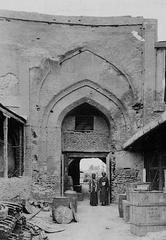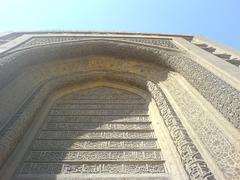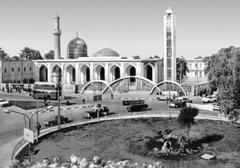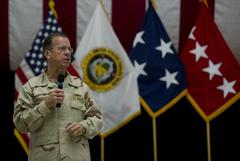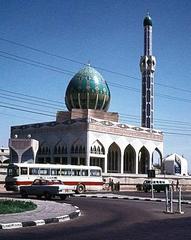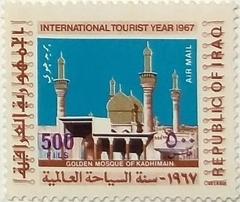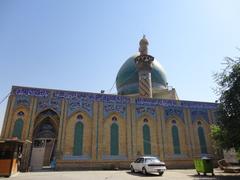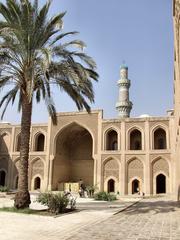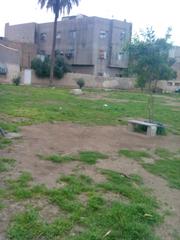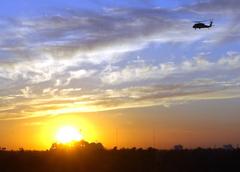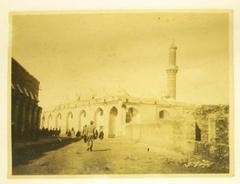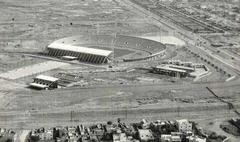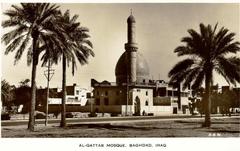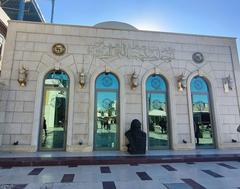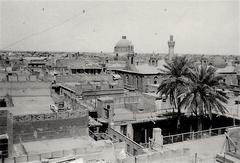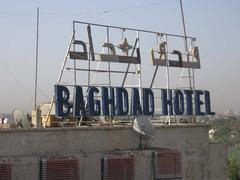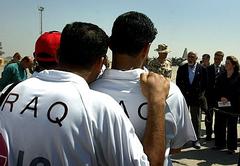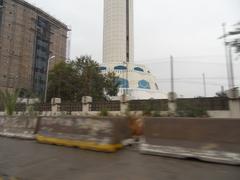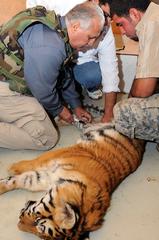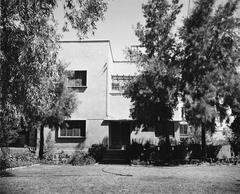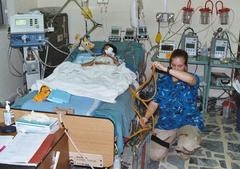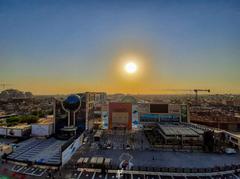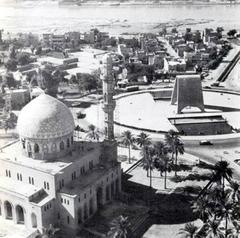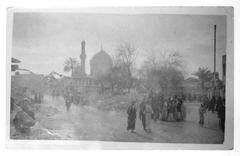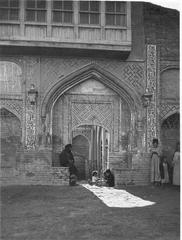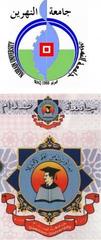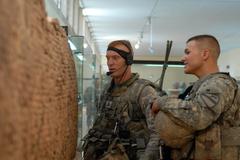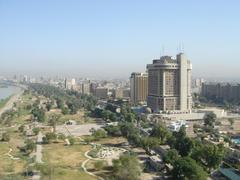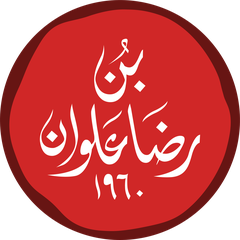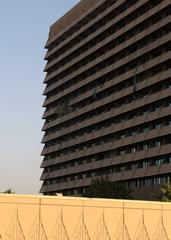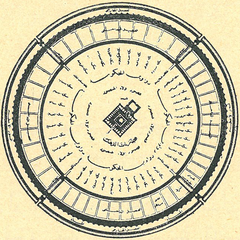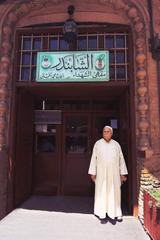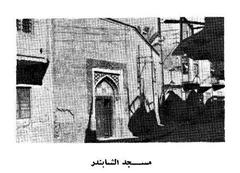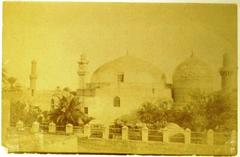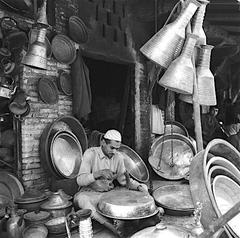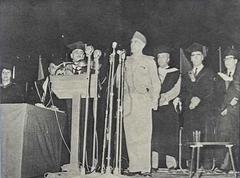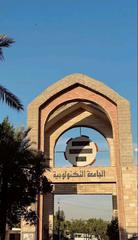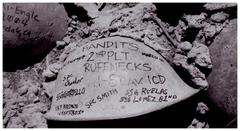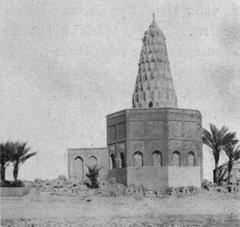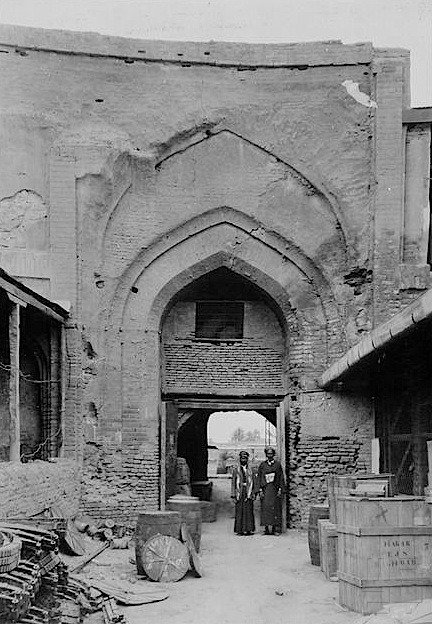
Mustansiriya Madrasah Baghdad: Visiting Hours, Tickets, and Historical Site Guide
Date: 14/06/2025
Introduction
The Mustansiriya Madrasah, located in the heart of Baghdad, stands as one of the oldest and most significant educational institutions in the Islamic world. Founded in 1227 CE by the Abbasid Caliph al-Mustansir Billah, the Madrasah is a lasting testament to Baghdad’s role as a beacon of intellectual, cultural, and architectural excellence during the Islamic Golden Age. Today, it not only preserves this profound legacy but also invites modern visitors to immerse themselves in the city’s scholarly and artistic traditions.
This comprehensive guide provides detailed insights into the Madrasah’s history, architectural features, cultural significance, practical visiting information (including hours, ticketing, and accessibility), nearby attractions, safety considerations, and travel tips. Whether you are a history enthusiast, architecture lover, or cultural explorer, use this resource to plan a memorable visit to one of Baghdad’s most treasured landmarks. For official updates and further resources, consult the Iraqi Ministry of Culture and dedicated historical platforms (Wikiwand, Pocketmags, layersofbaghdad.site).
Table of Contents
- Introduction
- Historical Background
- Architectural Features
- Cultural and Educational Significance
- Visitor Information
- Safety and Practical Considerations
- Travel Tips
- Frequently Asked Questions (FAQ)
- Conclusion and Call to Action
- References
Historical Background
Foundation and Abbasid Era Origins
Al-Mustansiriya Madrasah was established in 1227 CE (official opening in 1233 CE) by the Abbasid Caliph al-Mustansir Billah, at a time when Baghdad was the preeminent center of learning and culture in the Islamic world (Wikiwand). The Madrasah was conceived as a comprehensive university, teaching theology, law, medicine, mathematics, astronomy, and philosophy (Pocketmags). Its curriculum and organization around the four Sunni schools of Islamic law—Hanafi, Maliki, Shafi’i, and Hanbali—reflected the Abbasid vision of intellectual pluralism and academic rigor.
Educational Structure and Facilities
The Madrasah was unique for its era, offering integrated facilities such as a hammam (bathhouse), hospital, pharmacy, food storage, kitchen, and student residences (Atlas Islamica). Students benefited from free education, accommodation, meals, and stipends, which promoted academic merit and accessibility. The Madrasah’s legendary library, at its peak, housed tens of thousands of volumes, symbolizing Baghdad’s intellectual vibrancy.
Mongol Invasion and Later History
The Mongol invasion of 1258 devastated much of Baghdad, but the Mustansiriya Madrasah’s structure survived (Wikiwand). Although the scholar community was disrupted and the library collections diminished, the institution continued to operate under Mongol and later Timurid rule, albeit with reduced prestige (Round City).
Ottoman and Modern Transformations
Following Ottoman conquest in 1534, the Madrasah’s role shifted, at times serving as a military rest stop, warehouse, and later as a customs office and caravanserai (Wikipedia). By the 19th century, neglect led to the loss of many original features (Iraqi Civil Society). Restoration work began in the 20th century, and in 1960 the site became the Museum of Islamic Art (Pocketmags).
Restoration and UNESCO Recognition
Since the 1970s, major restoration campaigns have sought to preserve the Madrasah’s historical integrity, following UNESCO guidelines (Archnet). Despite challenges, including damage and looting in recent decades, the site remains a symbol of Baghdad’s resilience. In 1963, the founding of Mustansiriya University linked the historic Madrasah with Iraq’s modern educational aspirations (Iraqi Civil Society).
Architectural Features
Layout and Design
The Mustansiriya Madrasah is a rectangular, two-storey structure measuring approximately 106 by 48 meters, centered around a vast open courtyard (Semantic Scholar). Monumental iwans (vaulted halls) frame the north, west, and east sides, with the main entrance on the north and mosque area on the south.
Decorative Elements
The building’s façades feature classic Abbasid brickwork, geometric motifs, Kufic inscriptions, pointed arches, and muqarnas (stalactite vaulting). The restoration has faithfully replicated original decorative elements, preserving the site’s artistic authenticity.
Symbolism and Artistic Value
The Madrasah’s architecture embodies the Abbasid ideal of knowledge as a unifying force, using harmonious proportions, symmetry, and ornamentation. Its design, accommodating all four Sunni schools, symbolizes Baghdad’s role as a center of intellectual and religious pluralism.
Cultural and Educational Significance
Regarded as one of the world’s earliest universities, the Mustansiriya Madrasah played a pivotal role during Baghdad’s golden age. Its comprehensive curriculum and extensive library attracted students and scholars from across the Islamic world (scoopempire.com). Today, it stands as a symbol of Iraq’s scholarly heritage and cultural resilience.
Visitor Information
Location and Directions
- Address: Rashid Street, Rusafa district, Baghdad, Iraq
- Coordinates: 33.3384° N, 44.3903° E (layersofbaghdad.site)
- Nearby: Al-Mutanabbi Street, Al-Qushla, Abbasid Palace, National Museum of Iraq
The Madrasah is easily accessible by taxi or public transportation from central Baghdad. Parking is limited; local taxis are recommended.
Opening Hours and Tickets
- Hours: Saturday to Thursday, 9:00 AM – 5:00 PM; closed Fridays and public holidays (WildTrips)
- Tickets: Typically free or a nominal fee (approx. 3,000–5,000 IQD); confirm locally as prices and access may change
Accessibility
While the site includes some ramps and accessible pathways, many areas feature uneven surfaces and stairs, making access challenging for visitors with mobility needs.
Guided Tours and Events
Guided tours (Arabic and English) can be arranged through the museum or local tour operators. The Madrasah also hosts cultural events, exhibitions, and educational programs during festivals and special occasions (shafaq.com).
Photography Guidelines
Photography is permitted in public areas, but flash and tripods may be restricted. Always ask for permission before photographing people or religious spaces.
On-Site Facilities
- Restrooms: Basic facilities available
- Shops/Cafés: None on-site, but numerous options nearby along Al-Mutanabbi Street
- Souvenirs: Bookstores and crafts available in the surrounding district
Nearby Attractions
- Al-Mutanabbi Street: Baghdad’s famous book market and cultural hub
- Abbasid Palace: Another architectural gem from the Abbasid era
- Al-Qushla: 19th-century Ottoman barracks and cultural center
- Baghdadi Museum: Showcasing local history and traditions
Safety and Practical Considerations
Security and Travel Advisory
- Security: While Baghdad’s security has improved, conditions can change; check your country’s latest travel advisory (UK FCDO), and register with your embassy.
- Transport: Use reputable taxis or private transport arranged through hotels; avoid travel after dark.
- Health: Carry bottled water, avoid tap water, and ensure travel insurance covers medical emergencies (travelsafe-abroad.com).
Dress Code and Etiquette
- Dress Modestly: Long trousers/skirts, sleeves, and headscarves for women. Respectful behavior is expected at all times (Kurdistan Trips).
Seasonal Weather
- Best time to visit: October–April (mild temperatures)
- Summer: Can exceed 40°C (104°F); hydrate and avoid midday heat
Travel Tips
- Plan ahead: Confirm hours and ticketing before arrival.
- Hire a guide: Enhances understanding of history and architecture.
- Cash: Carry Iraqi Dinar; credit cards are rarely accepted.
- Language: Arabic is primary; English is spoken by some guides.
- Tipping: Customary for guides and drivers.
Frequently Asked Questions (FAQ)
Q: What are the Mustansiriya Madrasah visiting hours?
A: Saturday to Thursday, 9:00 AM–5:00 PM; closed Fridays and public holidays.
Q: How much are tickets?
A: Entry is usually free or a nominal fee (3,000–5,000 IQD). Confirm locally.
Q: Is the Madrasah wheelchair accessible?
A: Accessibility is limited; contact the museum for specific needs.
Q: Are guided tours available?
A: Yes, in Arabic and sometimes English; book in advance.
Q: Can I take photos inside?
A: Generally yes, but avoid flash and always ask for permission in sensitive areas.
Conclusion and Call to Action
Al-Mustansiriya Madrasah stands as an enduring emblem of Baghdad’s intellectual and architectural legacy. Visiting this historic site offers a unique opportunity to connect with the city’s vibrant past and its ongoing cultural revival. For the most up-to-date visitor information, consult official resources and consider using the Audiala app for exclusive travel guides and tips.
Download the Audiala app for comprehensive guides, latest event updates, and curated cultural itineraries. Follow us on social media to stay informed about Baghdad’s heritage sites and upcoming events.
References
- Mustansiriya Madrasah, 2025, Wikiwand
- Mustansiriya Madrasah Restoration, 2025, Archnet
- Mustansiriya Madrasah Historical Overview, 2025, Pocketmags
- Al-Mustansiriya Madrasah Architectural Study, 2025, Semantic Scholar
- Baghdad Historical Sites and Visitor Guide, 2025, TripXL
- Mustansiriya Madrasah Preservation Efforts, 2025, Iraqi Civil Society
- Baghdad Tourist Information and Events, 2025, Shafaq News
- Historical and Cultural Insights on Al-Mustansiriya Madrasah, 2025, Layers of Baghdad
- The History Behind Baghdad’s Oldest University, Scoop Empire
- Kurdistan Trips: Mustansiriya Madrasah
- TravelSetu: Things to Do in Baghdad
- WildTrips: Baghdad Top Attractions
- UK FCDO Travel Advice - Iraq
- Travel Safe Abroad: Iraq
- Archiqoo: Mustansiriya Madrasah
Visual recommendations:
- High-resolution images of the Madrasah’s entrance, courtyard, and brickwork (alt: “Mustansiriya Madrasah courtyard in Baghdad historical sites”)
- Interactive map of location and nearby attractions
Internal links:
- Articles on Al-Mutanabbi Street, Abbasid Palace, and Baghdad’s National Museum
- Guides on Baghdad travel safety and cultural etiquette
